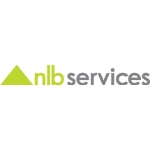© 2025 Next Level Business Services Inc. All Rights Reserved.
Virtual Workforce – Key Enabler in an Uncertain World
By NLB Services
Virtualization of the workforce has seen a precipitous rise in the last month of the pandemic – what was an upcoming trend is now suddenly the standard work protocol for the global workforce. Till last year, reports suggested that 4.3 million people in the USA work from home at least half the time. By 2028, this number was predicted to grow to 40 million. The pandemic has suddenly advanced this whole schedule.
At NLB, we concluded a webinar with industry leaders on workforce virtualization and here are some of the viewpoints and concerns that emerged –
The need for enhanced customer engagement in B2B scenarios between vendors and clients – For vendors or suppliers dealing with large corporate clients, a virtualized workforce can be best utilized in client servicing ecosystems.
The last month has shown that while dealing with any type of situation that tests the relationship such as supplier delivery issues, political or environmental events, or the current global pandemic, an organization with established vendor relationships and streamlined management will survive better.
Read More: Preparing for Tomorrow’s Workforce Today
A virtual workforce can be more flexible and adaptable, leading to a quick resolution of bottlenecks on both the vendor side and the client-side. In difficult times, the need to work together and be more aggressive in communication is critical and remote working teams can deal with this situation better.
Technology companies are better placed to harness virtual workforces –IT/ITes service providers have moved to 95% remote working scenarios within a few weeks. IT companies believe in adapting an organization’s strategy and structure to opportunities enabled by digital tech. According to industry professionals, WFH opportunity lies in how you are leveraging movement to the cloud, AI and agile techniques. However, remote can only be managed well when there is enough bandwidth, tools, and connectivity to manage it.
Read More: The Complete Remote Onboarding Checklist For Virtual Employees
Financial Sector must think about security and compliance before virtualizing its workforce – Until recently the BFSI sector was hindered from embracing remote work culture because of its regulatory restrictions and security concerns. They have now been forced to jump on to the WFH bandwagon, but after COVID-19, service providers must provide enhanced security to banks and their customers to keep them committed to building a virtualized workforce.
They do anticipate that virtual offices will take a big step up after the pandemic subsides as the sector has now realized that the workforce can do a lot more from home. But to actualize it, tools must be put together around security.
The healthcare sector is well ahead of the curve – Telemedicine is already an established and rapidly growing trend in the healthcare industry. However, security and patient confidentiality remain major concerns, hence, the next step is to create safe models to make virtual the new norm in healthcare. Industry professionals are also considering the options of taking on a virtual workforce and exploring opening up hiring to the global ecosystem.
Telecom and Utilities are using innovative digital technologies to go virtual – It is difficult for essential services such as telecom, power generation or water and sanitation to go virtual as they rely heavily on last-mile field technicians. While there were already some digital innovations being developed for virtualizing boots on the ground, the pandemic has tested these emerging technologies and tools to their limits. Now, field services technicians are working remotely by leveraging AR (augmented reality), guiding consumers to do last-mile configuration sitting in their trucks. Manufacturers, warehouses, and utility companies are increasingly adopting robotics and automation on the field.
Talent acquisition is ready to go 100% virtual – Virtualization has been the long term trend but the current pandemic has led to an explosion in the field of digital-led talent acquisition. Tools have been in place for years to on-board employees and vendors online. Now people are readily testing and using these more often. Selections, asset procurement, onboarding and more – can all be easily shifted online.
The industry is hoping for a V-shaped recovery post the pandemic and is putting in place digital tools to tap into the churn of recruitment once the businesses start opening up.
Security is the biggest underlying concern around the virtual workforce for most industries – Automation and virtualization have been upcoming trends in any case – the pandemic has just opened our minds further.
However, it has also presented a very attractive opportunity for all threat actors. A large and immediate migration of employees from a closely monitored enterprise network to largely unmonitored and unsecured WiFi home setups is a big security weak spot.
Thankfully, the cybersecurity industry is more than capable of dealing with this situation. The immediate focus is on perimeter security to cover the suddenly expanded number of endpoints and the need to sensitize the workforce to understand their role in preventing cyber attacks. But going ahead the industry will champion solutions such as zero-trust policies, which will remove the need for credentials and access management at the individual employee level.
The Bottom Line
The pandemic is like a pit-stop in a NASCAR race. In the midst of a hectic race, the car stops completely. But that doesn’t mean that the race is over. As soon as the pandemic winds down, businesses must be ready to restart at full capacity – quickly. Those who cannot will fall behind.
Virtualization of the workforce is one way to ensure that companies stay open and functional despite the physical constraints. However, the remote-work trend is here to stay even after the pandemic goes away. Companies have realized they can operate successfully in virtual mode – it presents substantial cost benefits and increases employee satisfaction.
Talent Solutions








